Cells, spiders, human figures and womb-like sculptures ... let Jonathan Jones guide you through the remarkable work of this most inventive of artists
Untitled, 1950 and Femme Volage, 1951
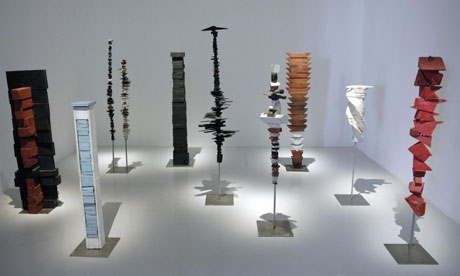
An image from a Louise Bourgeois retrospective at the Pompidou, Paris in 2008, including Untitled (1950), back right, and Femme Volage (1951), centre. Photograph: Stephane de Sakutin/AFPStacked triangles of wood create the semblance of a human figure in one of Bourgeois's early sculptures, Untitled (1950). "Primitive" carvings in New York's Metropolitan Museum of Art may have influenced this totem-like form, as did the paintings of the abstract expressionists. Yet the personality of Bourgeois, as ever, shines through. The rough-cut wood, the asymmetrical stacking, create an inner tension; while the work suggests architecture, its prickly irregularity communicates unreason and rage.
Femme Volage, by contrast, is eerily light – a floating, human-like figure that seems like a phantom. You can easily imagine this work sitting in a slick 1950s apartment, or perhaps villain James Mason's modernist retreat in Hitchcock's North by Northwest. But its jagged and jumbled wooden components create a human form that seems to have been irradiated, reduced to essentials.
Fragile Goddess, 2002
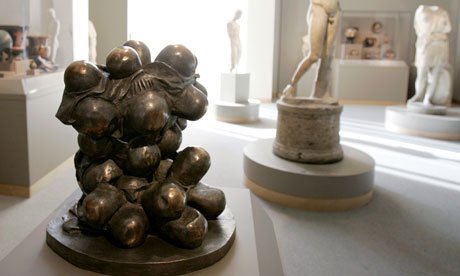
Fragile Goddess on display at the Walters Art Museum, Baltimore, in 2006. Photograph: Chris Gardner/APSeeing this sculpture among classical nudes, you realise that it turns the millennia-old western tradition of sculpture as the depiction of the human inside-out. Organs, fluids, eggs, scrotal sacs all might come to mind; the secret life of the body and our most primitive biological heritage swarm this nest of coeval somethings.
Janus Fleuri, 1968
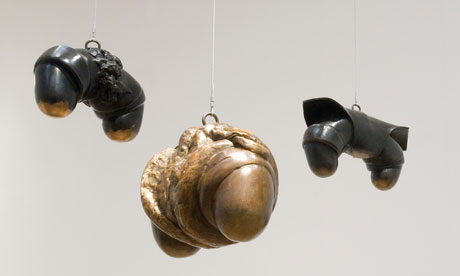
A shot from the 2007-08 Louise Bourgeois exhibition at Tate Modern. Janus Fleuri (1968) is in the centre. Photograph: Christian SinibaldiThere is a neolithic sculpture from the Middle East in the British Museum that resembles this piece; you might equally think of collapsing kidneys, even a turd. A compelling portrayal of sexuality exploding, then falling in a heap. Surely one of her masterpieces.
Cumul I, 1969
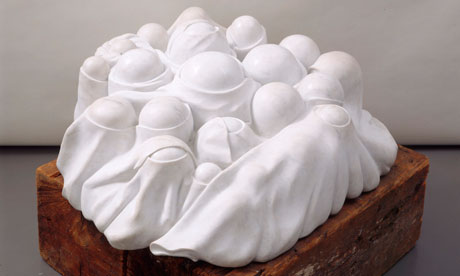
Cumul I (1968). Photograph: HO/Associated Press Bourgeois claimed she saw no sexual forms in this teeming nest of, er, sexual forms. (Artists don't always have to make sense.) The whiteness of marble creates an ethereal, cloud-like quality: hence the title.
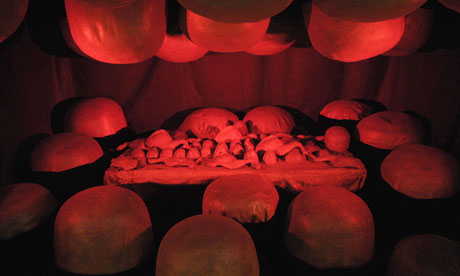
Destruction of the Father, 1974

Destruction of the Father (1974). Photograph: Stephane de Sakutin/AFP Bourgeois's evisceration and revelation of the body's inner secrets culminate in this work: an inside-out sculpture that takes us into an alien reality of seething flesh. The violence contained within it is personal and vengeful – especially given that title.
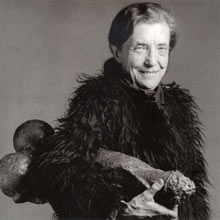
Louise Bourgeois by Robert Mapplethorpe (1982)

Louise Bourgeois by Robert Mapplethorpe. Photograph: AFPThis photograph did a lot to popularise its subject, and can almost be seen as a collaborative artwork: the formidable object the artist holds, her feather fur coat and her extraordinary smiling features conspire with Mapplethorpe's intensely charged monochrome. You sense someone dark and full of secrets.
Cell (Eyes and Mirrors), 1989-93

Cell (Eyes and Mirrors), 1989-93. Photograph: Christian SinibaldiAmong her most explicitly autobiographical installations, the Cells recreate architectures that Bourgeois remembered from childhood. This series of works is perhaps her most influential, and arguably her best: dense, claustrophobic interiors, thick with association.
Maman, 1999
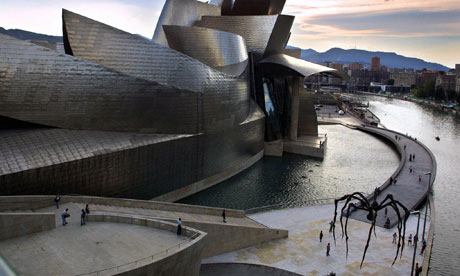
Maman (1999), exhibited outside the Guggenheim Museum in Bilbao. Photograph: Rafa Rivas/AFPThe 20th century produced many icons of the wounded psyche, from Picasso's Demoiselles d'Avignon to Salvador Dali's Great Masturbator – almost all created by men. In her series of vast spider sculptures, Bourgeois digs into the psyche from a new perspective: a woman depicting a creature she calls "Mother", nurturing yet overwhelming.
St Sebastienne, 1992
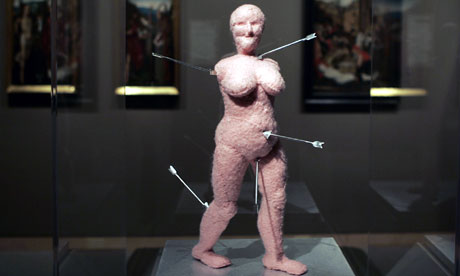
St Sebastienne, 1992. Photograph: Chris Gardner/AP
If the art of Louise Bourgeois seems at times to come from outer space, she was also an artist in the traditional sense of the word – a sculptor, reinventing and acknowledging tradition. Here, she responds to the European tradition of depicting St Sebastian, tortured with arrows, as an image of desire and suffering – but does so in pink fabric, as if it were a childhood doll.


No comments:
Post a Comment